Eodapsan Mountain Tourist Area (어답산관광지)
0m 2858 2024-02-29
513-2 Byeongjibang-ri, Gapcheon-myeon, Hoengseong-gun, Gangwon-do
The Eodapsan Mountain Tourist Area, encompassing both Eodapsan Mountain and Byeongjibanggyegok Valley, is celebrated for its stunning natural beauty. The area is a harmonious blend of lush forests and pristine valleys. It features distinctive rock formations that rise majestically, resembling folding screens, and these are beautifully framed by pine trees, offering a serene setting for forest bathing. At the mountain's summit, visitors can explore notable landmarks like Eodapsanseong Fortress and Eodapsansa Temple. The hiking trails leading to the summit are gentle and accessible, providing an easy and enjoyable climb suitable to most people.
Hoengseonghosugil Trail (횡성호수길)
5.5 Km 0 2023-12-28
40 Taegi-ro gubang 5-gil, Hoengseong-gun, Gangwon-do
With the completion of the Hoengseong Dam in 2000, an artificial lake called Hoengseong Lake was created, and a total of 31.5 kilometers of six courses were created around the lake. Hoengseonghosugil Trail is divided into themes, Course 1 Hoengseong Dam Road (Hoengseongdae-Daegwandae-ri 3 km, about 1 hour), Course 2 Neungseon-gil (Daegwandae-ri-Hoengseong Hot Spring 4 km, about 2 hours), Course 3 Healing Road (Hoengseong Hot Spring-Hwajeon-ri 1.5 km, about 1 hour), Course 4 Contemplative Path (Hwajeon-ri - Manghyangui Hill 7 km, about 2 hours 30 minutes), Course 5 Family Road (Manghyang's Garden 9 km, about 3 hours) and Course 6, Hoesanggil (Manghyang's Garden - Hoengseong Dam, 7 km, about 2 hours and 30 minutes). Among them, the 5-section Family Road (9 km) is a great course to enjoy Hoengseong Lake up close fully and is the only course that returns to the starting point. Course A, which starts and returns from the Garden of Paradise, has three observatories with an expansive view of the shadows reflected on the picturesque lake and cute sculptures everywhere. Course B (4.5 km) continues with a trail full of forests. Hoengseong Lake Shelter Observatory has a panoramic view of the lake and a colony of aspen trees. Section 5 of Hoengseonghosu-gil was selected as an “open tourist destination” by the Ministry of Culture, Sports and Tourism in 2020, and barrier-free circulation was completed for some sections (parking lot-family rest area).
Hoengseong Natural Recreation Forest (횡성자연휴양림)
7.8 Km 17144 2021-05-28
113, Jeongpo-ro 430beon-gil, Hoengseong-gun, Gangwon-do
+82-33-344-3391
Hoengseong Natural Recreational Forest is located in Jeogorigol Valley, which used be a popular recreational spot for the Silla Kingdom royal families. There still remain a 3-story pagoda with the Silla era architectural design, an altar that is thought to originate from the Samhan era, and other historical relics including a stone monument, palace site, and southern region style dolmen. The Forest also has several hiking trails with resting areas and mineral water springs, as well as various convenience, recreational and lodging facilities.
Hoengseong Hanu Festival (횡성한우축제)
12.6 Km 22514 2023-09-14
47, Munhwacheyuk-ro, Hoengseong-gun, Gangwon-do
+82-1522-1099
Hoengseong Hanu Festival is the biggest hanu (Korean cattle) festival in Korea. Visitors can buy hanu and local agricultural products at a discounted price. Other programs include performances and more.
Hoengseong Hanugukbap (횡성한우국밥)
12.7 Km 0 2024-02-19
46 Munhwacheyuk-ro, Hoengseong-eup, Hoengseong-gun, Gangwon-do
Hoengseong Hanugukbap is a Korean restaurant that specializes in dishes made with local Hoengseong hanu (Korean beef). The restaurant's signature offering, hanu gukbap (Korean beef and rice soup), is exclusively prepared using Hoengseong hanu, which is renowned for its tender and chewy textures as well as its rich, flavorful juices. The broth, simmered for a long time in a gamasot (cast-iron pot), carries a deep and rich flavor. It's a popular dining spot among both locals and tourists alike.
Seomgang River (Seomgang Resort) (섬강(섬강유원지))
13.4 Km 28611 2021-01-28
Munye-ro, Hoengseong-gun, Gangwon-do
+82-33-340-2840
Seomgang River crisscrosses the heart of Hoengseong County, flowing on towards Wonju before eventually joining the Namhangang River. The banks of this river are home to a variety of wild flowers, including bright pink royal azaleas that bloom every spring. Gigantic rocks and pine tree forests on each side complete the view. High on the bluff rests Unamjeong Pavilion, overlooking the river and the unfolding vista. Hoengseong's downtown area starts right after crossing Seomgang River on Heongseonggyo Bridge. Nearby attractions like Hoengseong Sports Complex and local resturants specializing in fish stew also attract more tourists to come after sightseeing.
Gongjaksan Mountain (공작산)
14.1 Km 29147 2019-08-28
Hwachon-myeon, Hongcheon-gun, Gangwon-do
+82-33-430-2791
Gongjaksan Mountain, spreading out from the peak with an altitude of 887.4 meters, resembles the outstretched wings of a peacock (gongjak in Korean). Looking out from the top of the mountain, the entirety of Hongcheon County can be seen, as well as beautifully shaped cliffs spread throughout.
Sutagyegok Valley is very picturesque with wonderful rock outcrops and surroundings. This 8 kilometer-long valley links Sutasa Temple, which is about 6 kilometers lower than the peak, to Nocheon-ri.
Something for nearly every season with royal azalea flowers in spring, old pine trees and colorful foliage in fall, and snow-covered trees in winter, Gongjaksan Mountain's beauty catches the attention of hikers year-round.
Sutasa Temple (수타사)
14.5 Km 13879 2021-09-01
473, Sutasa-ro, Hongcheon-gun, Gangwon-do
+82-33-436-6611
Gongjaksan Mountain (887 m), home to Sutasa Temple and named for its resemblance to a peacock proudly displaying its tail feathers, gives visitors a bird’s-eye-view of Hongcheon. From the bottom, Gongjaksan Mountain looks like a giant laying on his back, looking up to the sky. The mountain offers elegant azaleas in spring, beautiful fall foliage, majestic cliffs with unusual rocks, colonies of pine trees, and a serene snowscape in winter.
Sutasa Valley, stretching over 12 kilometers between Sutasa Temple and Nocheon-ri, is full of large ponds and broad bedrocks and is flanked by rocky cliffs and pine groves.
Located among the foothills, Sutasa Temple is an ancient temple built by Monk Wonhyo in AD 708. The temple boasts numerous cultural properties including the gabled roof of Daejeokgwangjeon, a bronze bell, a three-tiered pagoda, and Wolinseokbo, a biography of Buddha that has been designated as a National Treasure.
Hoengseong Hanu Maeul (횡성한우마을)
15.0 Km 0 2023-12-07
348 Sunam-ro, Ucheon-myeon, Hoengseong-gun, Gangwon-do
+82-33-343-6008
Hoengseong Hanu Maeul is a restaurant located in Ucheon-myeon, Hoengseong that only serves hanu (Korean beef). The restaurant is highly regarded for serving excellent quality Korean beef certified by Heongseong County. The restaurant serves rib eye, boneless meat, yukhoe (beef tartare), and assorted hanu. <br><br> * Credit: Gangwon State Government
Park Hyeonjane Deodeokbap (박현자네더덕밥)
16.7 Km 20556 2024-02-23
59 Hoengseong-ro, Hoengseong-eup, Hoengseong-gun, Gangwon-do
033-344-1116
Deodeok, a local specialty of Hoengseong, is known for its slightly bitter taste and crunchy texture, making it a premium and healthy ingredient. This restaurant highlights the Park Hyeonjane deodeok bap set menu (deodeok rice set menu), which features deodeok sundae (sundae stuffed with deodeok), yukhoe (beef tartare), and deodeok bulgogi. Additionally, the menu offers dishes like deodeok bulgogi bibimbap and deodeong makgeolli (deodeok unrefined rice wine). To maintain the warmth of the food, dishes are served on hot iron plates. A typical meal concludes with warm nurungji (scorched rice), which is known to refresh and soothe the palate after the spicy flavors, rounding off the dining experience.

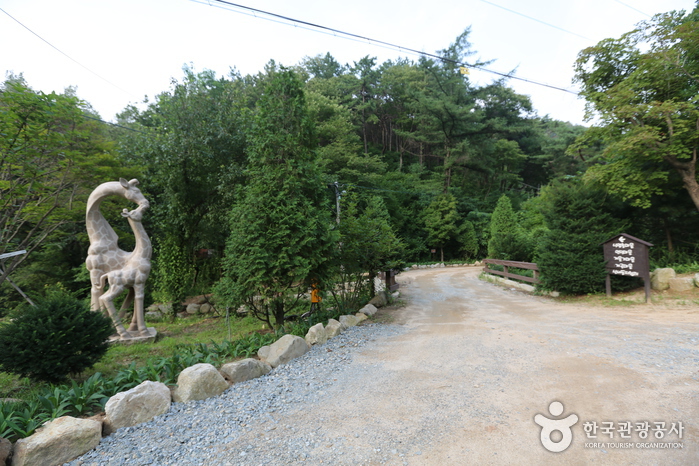
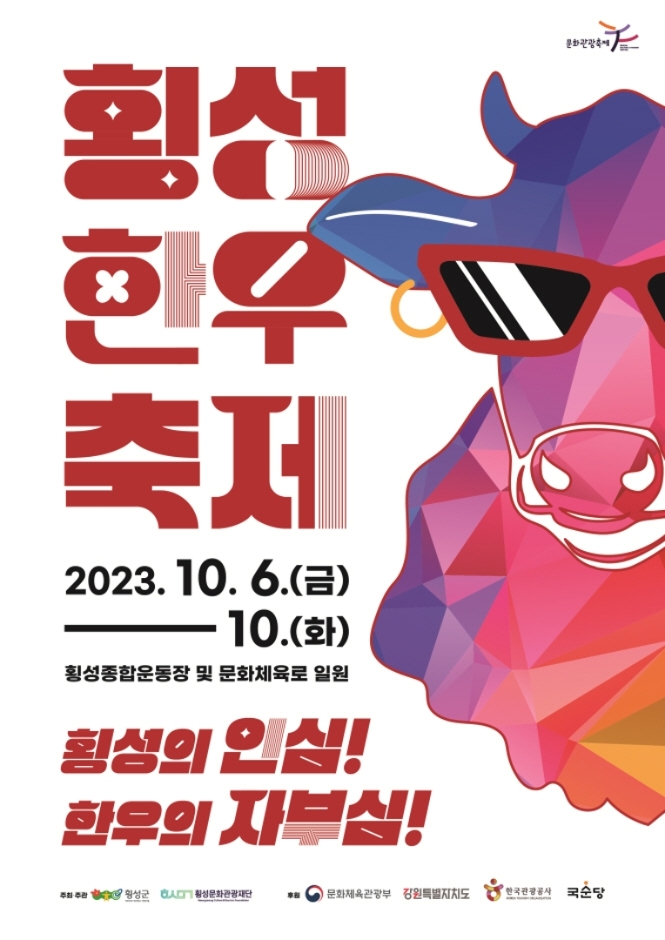
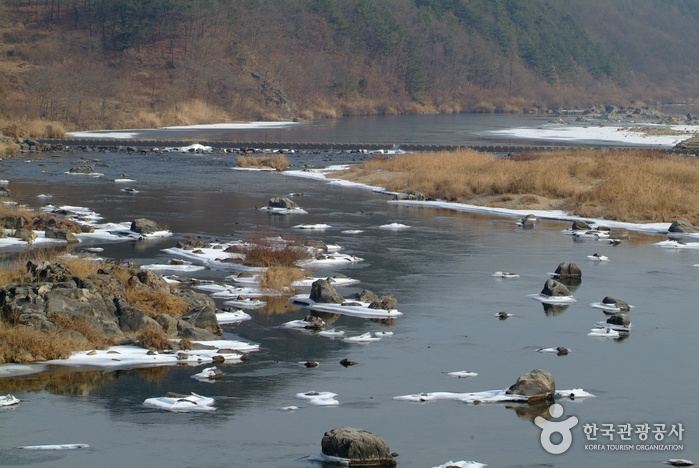
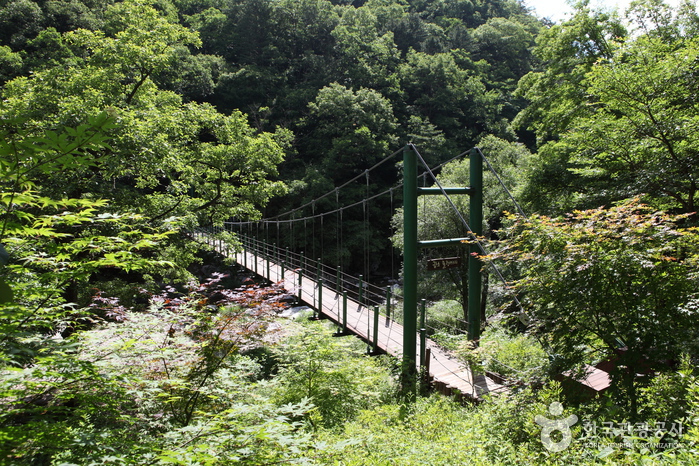
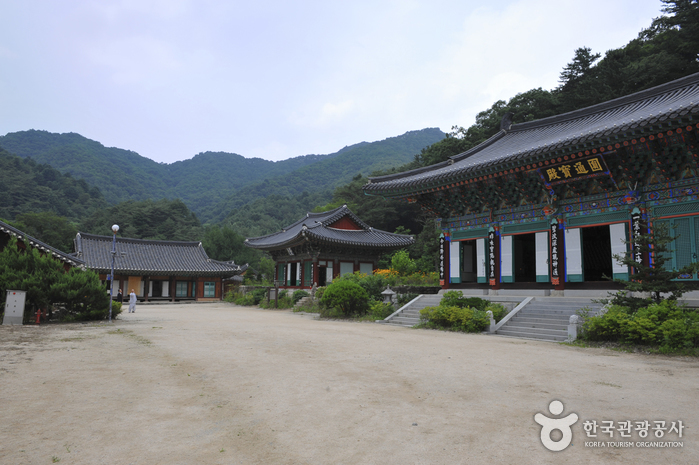
 English
English
 한국어
한국어 日本語
日本語 中文(简体)
中文(简体) Deutsch
Deutsch Français
Français Español
Español Русский
Русский